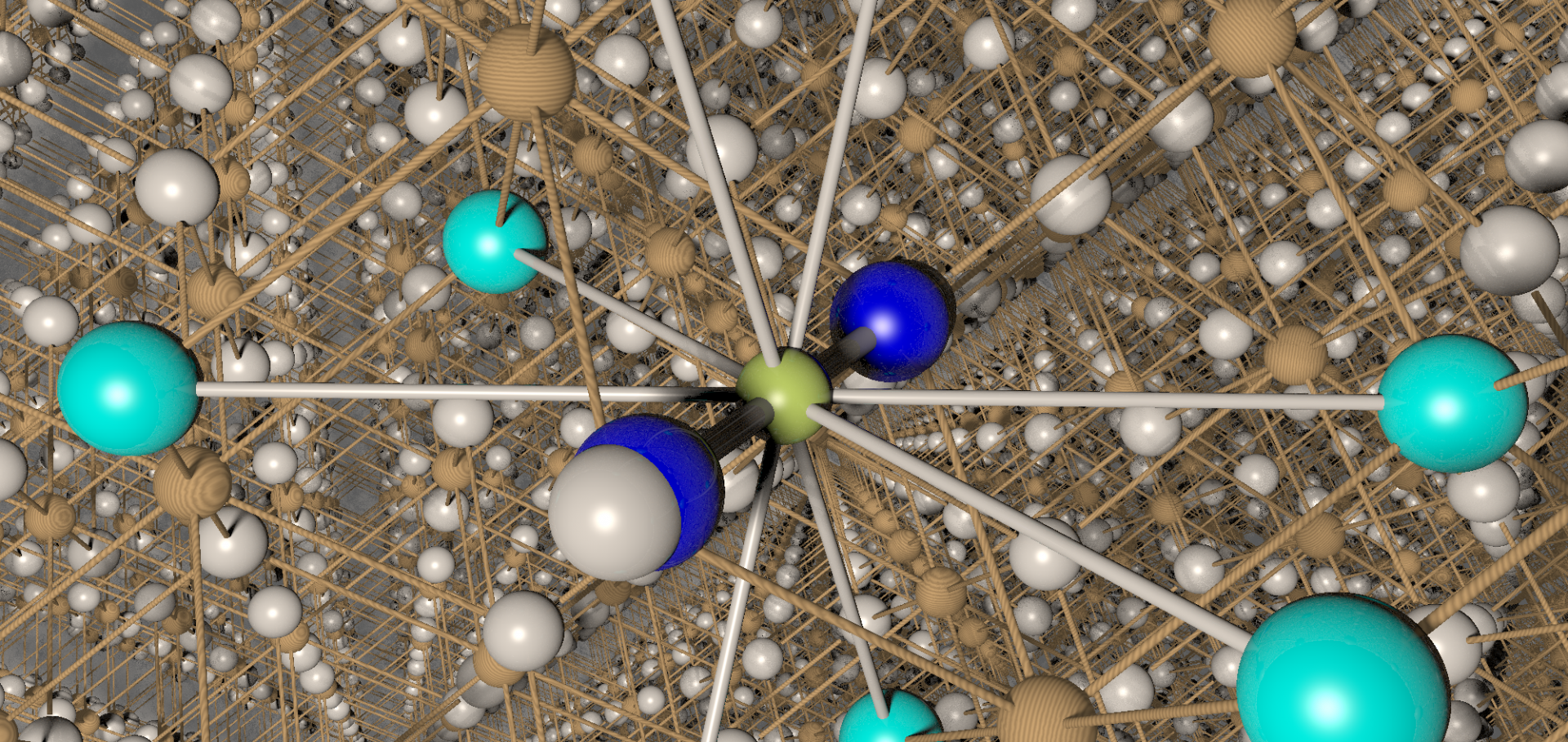Longitudinal muon spin relaxation in metals and semimetals and the Korringa law
Journal of Physics Condensed Matter 13:10 (2001) 2163-2168
Abstract:
The longitudinal muon spin relaxation in metals and semimetals is suggestive of a form of Korringa relaxation in which the hyperfine interaction between the muons and the conduction electrons plays a dominant rôle. We give an alternative derivation of the Korringa law and show how muons may thus be used to study interactions with conduction electrons at interstitial sites. The alternative derivation links the topic to the use of implanted muons both as probes of magnetic and correlated-electron systems and as proton analogues, modelling the behaviour of hydrogen impurity in metals and semimetals.Muon-spin-rotation and magnetization study of metal-organic magnets based on the dicyanamide anion
Journal of Physics Condensed Matter 13:10 (2001) 2263-2270
Abstract:
We report the results of a study of the metal-organic magnets MII[N(CN)Control of magnetic ordering by Jahn--Teller distortions in Nd(2)GaMnO(6) and La(2)GaMnO(6).
J Am Chem Soc 123:6 (2001) 1111-1122
Abstract:
The substitution of Ga(3+) into the Jahn--Teller distorted, antiferromagnetic perovskites LaMnO(3) and NdMnO(3) strongly affects both the crystal structures and resulting magnetic ordering. In both compounds the Ga(3+) and Mn(3+) cations are disordered over the six coordinate sites. La(2)GaMnO(6) is a ferromagnetic insulator (T(c) = 70 K); a moment per Mn cation of 2.08(5) mu(B) has been determined by neutron powder diffraction at 5 K. Bond length and displacement parameter data suggest Jahn--Teller distortions which are both coherent and incoherent with the Pnma space group symmetry of the perovskite structure (a = 5.51122(4) A, b = 7.80515(6) A, c = 5.52947(4) A) at room temperature. The coherent distortion is strongly suppressed in comparison with the parent LaMnO(3) phase, but the displacement ellipsoids suggest that incoherent distortions are significant and arise from local Jahn--Teller distortions. The preparation of the new phase Nd(2)GaMnO(6) has been found to depend on sample cooling rates, with detailed characterization necessary to ensure phase separation has been avoided. This compound also adopts the GdFeO(3)-type orthorhombically distorted perovskite structure (space group Pnma, a = 5.64876(1) A, b = 7.65212(2) A, c = 5.41943(1) A at room temperature). However, the B site substitution has a totally different effect on the Jahn--Teller distortion at the Mn(3+) centers. This phase exhibits a Q(2) mode Jahn--Teller distortion similar to that observed in LaMnO(3), although reduced in magnitude as a result of the introduction of Ga(3+) onto the B site. There is no evidence of a dynamic Jahn-Teller distortion. At 5 K a ferromagnetically ordered Nd(3+) moment of 1.06(6) mu(B) is aligned along the y-axis and a moment of 2.8(1) mu(B) per Mn(3+) is ordered in the xy plane making an angle of 29(2) degrees with the y-axis. The Mn(3+) moments couple ferromagnetically in the xz plane. However, along the y-axis the moments couple ferromagnetically while the x components are coupled antiferromagnetically. This results in a canted antiferromagnetic arrangement in which the dominant exchange is ferromagnetic. Nd(2)GaMnO(6) is paramagnetic above 40(5) K, with a paramagnetic moment and Weiss constant of 6.70(2) mu(B) and 45.9(4) K, respectively. An ordered moment of 6.08(3) mu(B) per Nd(2)GaMnO(6) formula unit was measured by magnetometry at 5 K in an applied magnetic field of 5 T.Molecular dynamics in a nematic liquid crystal probed by implanted muons
Physical Review B - Condensed Matter and Materials Physics 63:5 (2001)
Abstract:
We present the first muon spin rotation/relaxation study of a nematic liquid crystal (5CB). We identify four different positions for muonium addition to this compound by correlating the dominant peaks in the Fourier transform of the muon precession signal obtained in an applied transverse magnetic field. Experiments performed in a longitudinal field are used to probe changes in individual molecular dynamics at the solid-nematic transition. High field avoided level crossing spectroscopy reveals four ΔM=0 transitions which can be fitted using simplified models of collective molecular dynamics appropriate to the solid, nematic, and liquid phases. © 2001 The American Physical Society.Molecular dynamics in a nematic liquid crystal probed by implanted muons
Physical Review B - Condensed Matter and Materials Physics 63:5 (2001) 542041-542047


